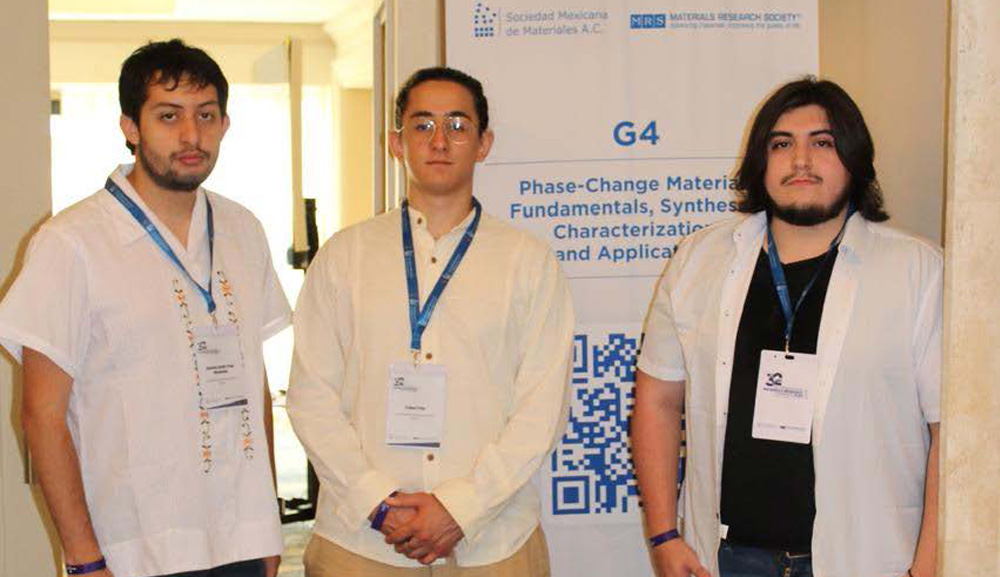Engineering students participate in the International Materials Research Congress

 Liderazgo Anáhuac en Innovación
Liderazgo Anáhuac en Innovación
The team from Anahuac Mexico University presented their project entitled "Investigating the Impact of Mineral-Enriched Aqueous Solutions on the Quenching Process of AISI 1045 Steel".
The 32nd International Materials Research Congress (IMRC) held in Cancun, Mexico, August 18-23, 2024, was an enriching experience for the students of the School of Engineering Carlos Alberto Guerrero Carballo, Franco Triay Robles and Eduardo Adolfo Colín Hernández, as well as for Dr. Aline Hernández García, a member of the same school.
During the symposium "G4 Phase-Change Materials: Fundamentals, Syntheses, Characterization, and Applications", the students presented their research entitled "Investigating the Impact of Mineral-Enriched Aqueous Solutions on the Quenching Process of AISI 1045 Steel," a study in which they investigated how a mineral-enriched aqueous solution can affect the quenching process of AISI 1045 steel and compared its effects with those obtained by using water, brine and oil as traditional quenching media. This project aimed to measure the cooling rate and analyze the resulting mechanical and microstructural properties of the treated steel.
To carry out this research, a rigorous procedure was followed that included measuring the cooling rate by generating Time-Temperature Transformation (TTT) curves. In addition, the hardness of the samples was evaluated using a diamond indenter, taking an average of ten measurements per sample to ensure the accuracy of the results.
Metallographic analysis was a fundamental part of the work, as observations were made using both optical microscopy and scanning electron microscopy (SEM), which allowed them to study in detail the grain structure and microstructural variations that each quenching medium produced in the steel. This approach also allowed them to compare the effects of the different quenching media in a precise and detailed manner, and thus draw more concrete conclusions.
The students' research resulted in an alternative to the traditional means used in steel heat treatment to form specific phases in a more efficient and less costly manner.
It should be noted that the presentation was well received at the congress and the members of this important project had the opportunity to share their findings with other experts in the field, resulting in a very enriching exchange of ideas.
This event not only validated the research, but also provided them with new perspectives to continue exploring and improving heat treatment techniques in industrial materials. The experience was an invaluable platform for sharing and learning and reinforced the School of Engineering's commitment to advanced materials research.
It is important to mention that some of the questions asked to the students were based on the applications of the method they discovered and the compositions of their solutions used in the heat treatments performed.
For more information:
Andrea Katalina Gómez Treviño
andrea.gomeztr@anahuac.mx
School of Engineering
